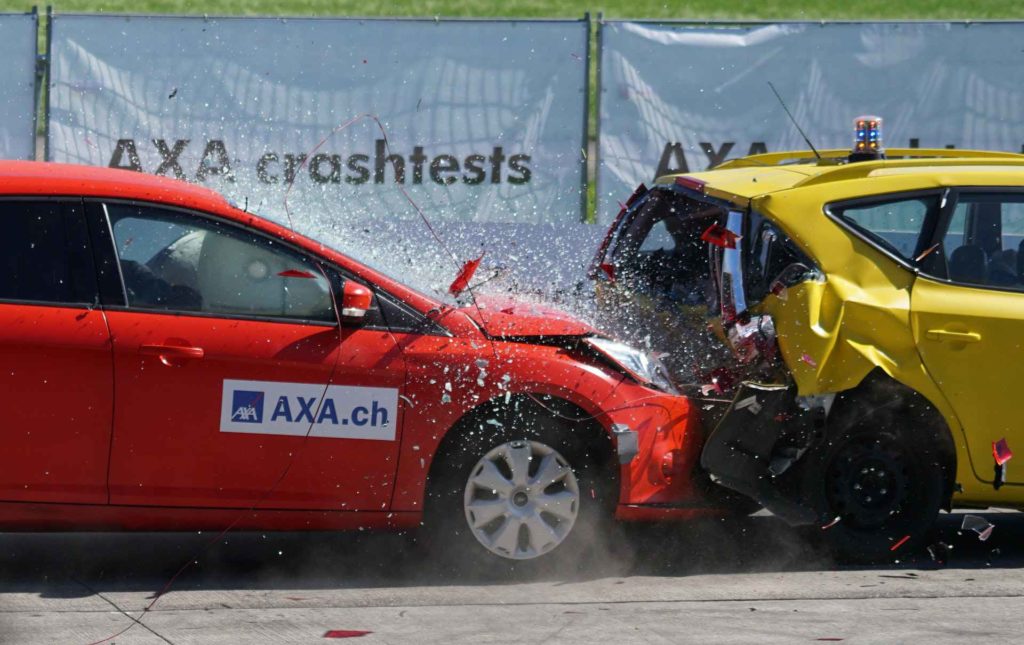With almost 284 million vehicles operating in the US, the country is one of the busiest when it comes to road traffic. It is no surprise there should be a significant number of car accidents. The NHTSA, or the National Highway Traffic Safety Administration, estimated 31,785 car accident fatalities in the first nine months of 2022.
There are several contributing factors to traffic accidents. But the high volume of cars, buses, trucks, and motorcycles on the roads contributes to their frequency and severity. Traffic congestion combined with unsafe driving behaviors exacerbates the situation.
There’s often minimal space between cars in a traffic jam. When drivers accelerate quickly, follow too closely, or engage in distracted driving, there’s a greater likelihood of crashing into another car. Rear-end collisions are among the most frequently occurring types of motor vehicle crashes.
The stop-and-go pattern of congested highway traffic can put drivers at greater risk of rear-end accidents. Most happen when the leading vehicle suddenly stops or moves at a very low speed, and the driver behind is tailgating.
Intersections are also more likely to experience rear-end crashes. This is because traffic is usually moving in multiple directions at an intersection. Being rear-ended in a collision, even at low speeds, can result in significant injuries.
Accident victims in a rear-end car crash may be eligible for compensation, depending on the specific circumstances. Suppose you or a loved one sustain injuries in a rear-end collision. In that case, an experienced personal injury attorney can discuss your legal rights and options.
Key Takeaways
|
Most Common Rear-End Collision Injuries
Various injuries and property damage can result from a rear-end crash, depending on several factors. These may include speed, body position, and safety belt use.
A high-speed rear-end collision and one involving multiple vehicles can cause more serious injuries. It also often causes substantial property damage to vehicles. When your car is struck from behind, your body is subject to considerable force and stress.
Seatbelts and airbags are safety features designed to lessen the impact of a car accident. However, sustaining injuries to the head, chest, and other body parts is still possible. The injuries may not immediately be apparent. That’s why seeking prompt medical attention as soon as possible after a vehicle accident is crucial.
Getting the proper diagnosis and medical treatment promptly can help prevent more severe injuries and save the victim’s life. Learn more about the most common injuries reported after a rear-end crash below.
Facial scarring and disfigurement
Facial scarring and disfigurement are some of the most frequent injuries in a rear-end crash. Victims may suffer numerous difficulties from severe scars and disfigurement. They may experience significant long-term pain and require extensive surgical intervention.
Injuries to the face can occur in different types of motor vehicle collisions, including rear-end accidents. They can result from contact with the airbag, broken glass, or dashboard fragments. These can cause deep cuts or burns, resulting in permanent scarring and disfigurement.
Even with the best possible medical treatment, they may leave victims with scars that impact their appearance for the rest of their lives. While some facial scarring and disfigurement are mainly cosmetic, others may involve the loss of mobility. This can reduce one’s quality of life and ability to get a job.
Neck and back injuries
Rear-end crashes are one of the most frequent causes of injury to the neck and back. The jarring force of the collision propels your upper body forward and backward. The rapid to-and-fro can result in neck and back injuries, such as whiplash.
A whiplash injury commonly happens when your head jerks back and forth in a rear-end accident. The movement can tear or strain the muscles, ligaments, and connective tissues in the neck and upper back. Whiplash is also common in many sports, such as wrestling, football, and diving.
Whiplash can lead to numerous debilitating symptoms, from headaches, upper back pain, and stiffness to loss of range of motion in the neck. Most victims who suffered a whiplash injury from a rear-end crash recover within a few weeks. However, some may have persistent pain for several months or longer.
Other common injuries in a rear-end collision include back sprains, herniated disks, spinal stenosis, and compression fractures.
Soft tissue injuries
The sudden physical trauma of rear-end collisions can damage soft tissues, which include the ligaments, tendons, and muscles. Soft tissue injuries, including sprains, bruises, and strains, can cause minor to severe pain and discomfort. Thus, it’s normal to experience soreness, swelling, bruising, and stiffness in the affected area.
But while tissue injuries may seem trivial, they can result in disability without proper and prompt medical care. Muscles and other soft tissues can sustain severe damage if the impact breaks or fractures the bone.
Nerve damage is also commonly associated with soft tissue injuries. When you injure or cut a nerve, it’s difficult for the body to generate new cells to replace the damaged ones. Seek medical attention after a rear-end crash to prevent a soft tissue injury from causing lasting nerve damage and other complications.
Traumatic brain injuries
Aside from whiplash, the rapid movement back and forth of the head in rear-end collisions can also cause traumatic brain injuries (TBI). The movement causes the brain to move against the skull, much like a stone inside a coconut. The result is bruising, bleeding, and tearing of nerve fibers.
Most people think head injuries only occur in high-impact car accidents. But you can get a TBI at low speeds, often when your head hits the dashboard or steering wheel.
Note that bumping your head isn’t necessary to sustain a TBI. Any forceful blow or jolt to the head can cause damage to the brain. It can also occur when an object penetrates the skull.
TBI symptoms can be mild, moderate, or severe. In some cases, accident victims may lose consciousness and suffer memory loss or impaired cognitive functioning. The damage from a TBI can result in lifelong complications, so getting medical care right away is crucial.
Spinal injuries
The sudden force of a rear-end accident puts a large amount of pressure on the spine. Your spine comprises vertebrae or small backbones stacked on each other to form the spinal column. The collision’s blunt trauma can fracture one of these vertebrae and cause a herniated disc.
Some accident victims who suffer from a herniated disc only experience mild pain for a short period. While most herniated discs heal with simple home-care measures, some cases may require emergency surgery.
It’s worth noting that herniated discs can damage the spinal cord, resulting in numbness. Spinal cord injuries can sometimes lead to temporary or permanent paralysis. Prompt medical treatment is essential to rule out a potentially more serious spinal cord injury as soon as possible.
Who is liable for rear-end collisions?


The driver who rear-ends another vehicle is often liable for a rear-end collision. This is because of the assumption that the rear driver is following too closely and engaging in distracted driving. But it’s not always the case. Establishing fault in a rear-end car accident depends on the circumstances.
The lead driver or another vehicle can be held responsible for the injured victim’s injuries and losses. Like other types of car accidents, a thorough investigation is crucial when determining fault in a rear-end crash.
Here’s what you should know if you have a valid case for your rear-ended collision injuries.
Establishing fault in a rear-end collision
Fault in most motor vehicle accidents is determined by negligence. A driver is guilty of negligence if their actions cause harm to other road users. However, you must prove the following elements to establish that the other driver was reckless and at fault for the rear-end collision.
- Duty of care
All drivers must operate their vehicles safely and follow traffic laws when on the road. That means drivers must obey speed limits, turn signals, traffic signs, and other rules to protect all road users. Getting behind the wheel is enough to establish a duty of care.
- Breach of duty
To be liable for a rear-end collision, the driver must have breached their duty of care. Showing that the other party violated a traffic rule is one way to establish a breach of duty. For instance, they may be tailgating, overspeeding, or texting while driving in rush hour traffic.
However, breaching their duty of care may not involve violating a traffic law. The driver may have failed to ensure their brakes work before operating the vehicle.
- Causation and injuries
It’s also vital to prove that the other driver’s breach of duty directly caused the accident and your injuries. If the breach of duty didn’t contribute to causing the incident, there would be no legal liability.
Additionally, you must demonstrate that you sustained actual injuries and losses due to the crash. Otherwise, you may not have a valid case of negligence and liability.
When the lead driver is at fault in a rear-end accident
The lead driver can be fully or partially at fault in a rear-end collision if they fail to use reasonable care when driving. Below are some potential situations where a front driver may bear some liability in rear-end accidents.
- Braking suddenly for no reason
- Driving in reverse without checking sufficiently
- Using a vehicle with non-functioning tail lights and brake lights
- Violating the right of way
- Failing to maintain a consistent speed
When another party is at-fault
In some cases, the parties in a rear-end collision may not be at fault for an accident. For example, another motorist swerved into your lane, forcing you to stop and causing the car behind to crash into you. Another scenario is when the car behind you has a product defect that causes sudden unintended acceleration.
Getting compensation after a rear-end crash
Can you still get compensation if you’re partially liable for a rear-end collision? The outcome of shared fault in a car crash may vary, depending on the state.
Some states follow a contributory negligence system. Under this rule, you cannot claim compensation if you contributed to the accident to any degree. It doesn’t matter whether you establish the elements of negligence. You’ll receive nothing even if you’re only one percent negligent.
But most states have adopted the comparative negligence rules. Under this rule, you can still pursue compensation even if you’re partially responsible for the accident. However, it reduces what you can recover by the percentage of your fault.
For instance, you’re 30% at fault for the rear-end crash. You may only recoup 70% of the damages instead of the full amount.
Damages in a rear-end accident can include the costs or losses related to the collision. Note that the type and amount will vary based on the extent of medical care your injuries require and other losses. Generally, you may claim the following compensatory damages:
- Past and future medical bills
- Loss of wages and earning capacity
- Physical pain and suffering
- Vehicle repair costs
- Disfigurement and scarring
- Loss of consortium
Why should you hire a lawyer after being rear-ended?


Even a seemingly straightforward rear-end accident case can be complicated. The legal process involves many complex documents, timelines, and requirements. Here’s what a lawyer can do in a rear-end collision case.
Protect your legal rights
Most accident victims don’t know what to do after being injured in a crash. It’s easy to make mistakes that will hurt your chances of getting fair compensation.
Insurance companies may delay claims and give you lowball offers. But a lawyer knows their tactics and how to combat them. By working with a personal injury lawyer who understands your rights, you have an advocate to protect you from unfair and unlawful situations.
Determine and prove legal liability
Determining legal fault is one of the critical issues after a rear-end accident. This may require proving why the collision happened, who caused it, and who’s liable for paying damages. A personal injury lawyer will conduct an in-depth investigation. They will gather the necessary evidence to hold the other party legally responsible.
Meet legal requirements and timeline
When filing a car accident injury claim, there are specific legal requirements and timelines. The statute of limitations ranges from less than a year to six years after the accident, depending on the state.
After the limitation period expires, it may be impossible to sue the at-fault driver and seek damages for your injuries. A personal injury attorney who knows state-specific laws will ensure you meet the deadline and file the appropriate paperwork.
Represent you in a personal injury lawsuit
Some rear-end accident cases cannot be resolved immediately through an


Pro Tip
Tailgating is the most frequent cause of rear-ending. Use the minimum three-second following distance to ensure sufficient space between you and the vehicle in front of you.
Did you sustain injuries in a rear-end collision? Visit The Personal Injury Center
It’s easy to get overwhelmed and confused after being rear-ended, especially if you sustained serious injuries. But you don’t have to deal with the accident-related financial and personal losses alone.
A personal injury lawyer can protect what you deserve and negotiate in your best interests. You can pursue damages for your medical bills and other costs associated with your rear-end accident injuries without stress.
Visit The Personal Injury Center to find competent legal assistance for your rear-end collision case. Get a free evaluation today, and we’ll connect you with qualified attorneys or reputable law firms in your area.
Ensure fair compensation for your rear-end accident injuries. Visit The Personal Injury Center to obtain legal assistance.
FAQs on Injuries From a Rear-End Collision
How long will a rear-end collision case take to settle?
Every rear-end collision is unique, so the time it takes to resolve the case will vary significantly. But on average, settling a rear-end crash can take several months to more than a year.
What's the average settlement amount for a rear-end car accident?
It's difficult to determine the actual settlement for a rear-end crash. While the outcome depends on the crash severity, payouts for rear-end collisions typically range from $3,000 to $20,000.
What steps should accident victims take after a rear-end accident?
What you do after a rear-end accident can affect your health and the outcome of your case. Although getting a lawyer is your best course of action, taking the following steps would also be helpful.
- Seek medical help after the crash.
- Report the accident to the police department.
- Exchange personal information with the other party involved.
- Take photos and videos of the crash scene.
- Gather statements from nearby witnesses.
- Notify the insurance company.



